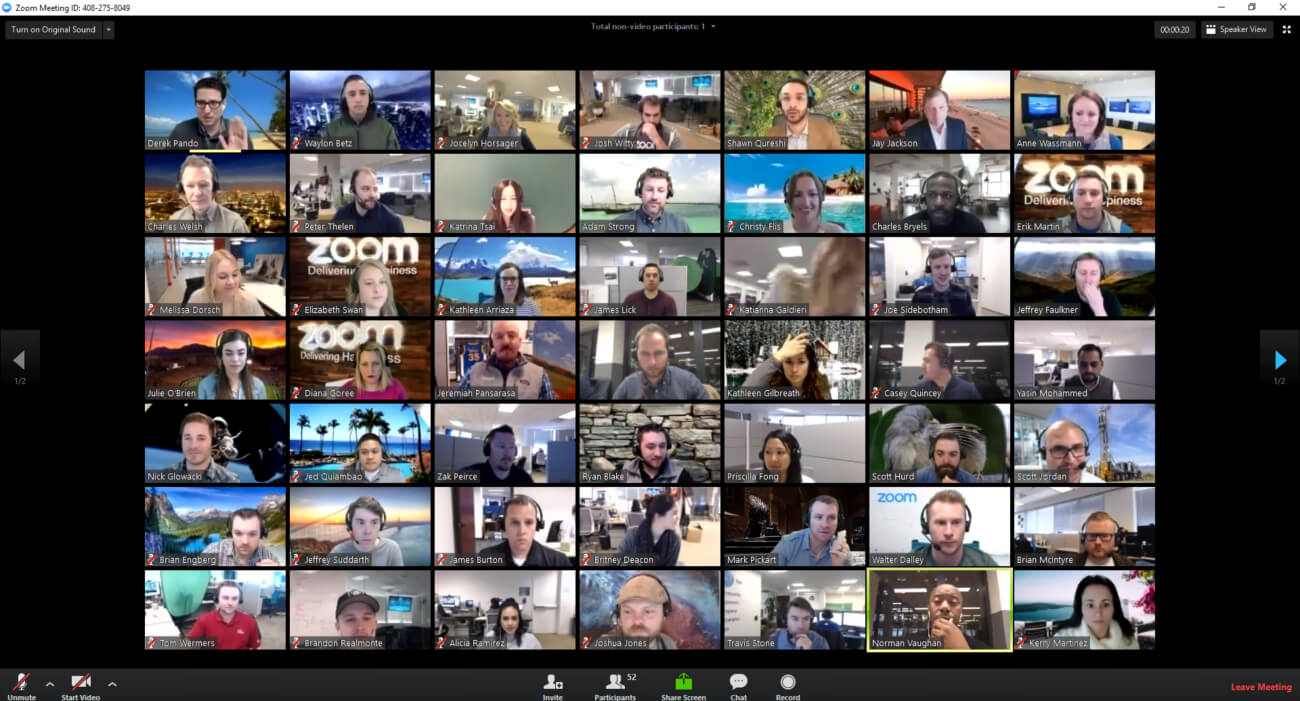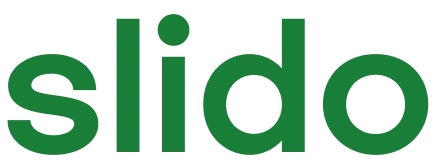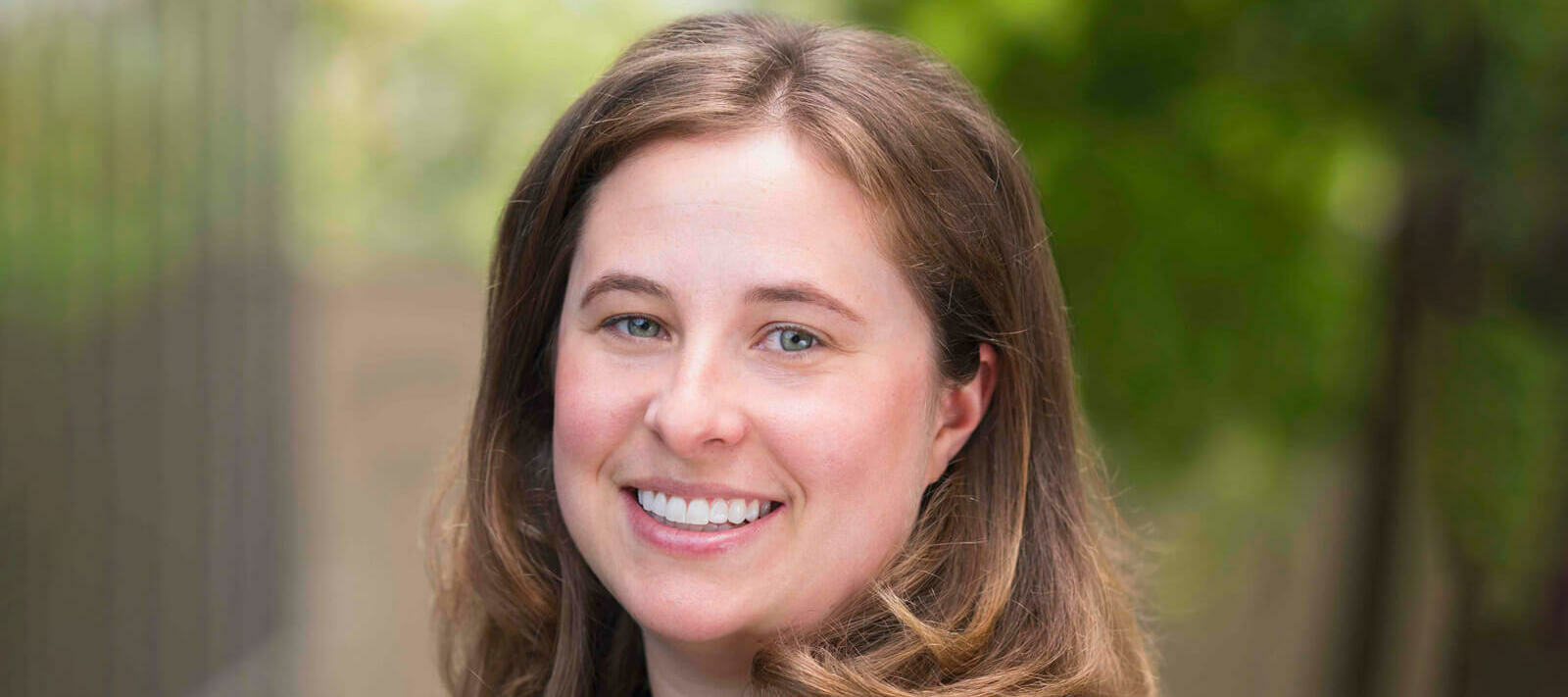Zoom is a video communications platform employing over 1,500 people around the globe. It’s also the second best company to work for in the US according to Glassdoor.
In the last couple of years, Zoom has experienced rapid growth in terms of both customers and employees. To keep its growing and distributed workforce aligned, the company runs regular all-hands meetings.
As we wanted to learn more about how Zoom runs its all-hands, we invited its Communications Manager Priscilla Barolo to our meetup in San Francisco. She let us take a peek into Zoom’s company-wide meetings and shared some of its best practices with us.
Here are some of the main takeaways from the interview.
Q: Priscilla, you’ve been with Zoom for six years. Do you remember when your all-hands started?
They started straight away when I was an early employee. I remember there were about a dozen of us in a circle, just talking about what’s going on in the business and the industry.
Q: What do your all-hands meetings look like now?
In some ways, they’ve stuck to a pretty similar structure, but they’re obviously much bigger in scale.
We host them at our HQ in San Jose, but most employees join online through our video platform. There are hundreds of endpoints on Zoom coming in, most of those as individuals connecting on their desktop or mobile devices, but others come in through their regional office conference rooms.
We have all-hands every other week on Thursdays. It’s more frequent than a lot of the other companies of our size – I hear once a month or once a quarter – but we are growing so quickly that I think these frequent check-ins are important.
We alternate between mornings and afternoons, so that way we get our EMEA and APAC teams in there in real time during business hours at least every other time.
Q: With so many participants joining remotely, what are your best practices when it comes to technology?
For us, the two-way video and audio has been really important.
While we are all muted automatically upon entry, we want to see each other’s faces. At our HQ, we have two screens on the sides of the room where we can see everyone coming in remotely in a gallery view, and then have other screens displaying content.

Another thing is that we want our remote employees to ask questions verbally in addition to text-based chat. So if they have questions, they can just unmute themselves and talk.
There’s an employee in the room who manages the participants’ list on Zoom and when someone unmutes themselves, they pop right up to the top of the participants’ queue.
I think that at such scale as ours, it’s helpful to have someone in the room to manage aspects such as Q/A, muting, and so forth, even if everyone knows how to use the product. And then to manage the recordings and the questions that get distributed before and after.
Q: What is the structure of your all-hands meetings?
It starts with our CEO giving an overview of the industry landscape and any major updates. If something’s come up in the past week or two, he’ll talk about that.
Next, we have an executive round if they have anything to share, and after that we do an anonymous Q&A. We sometimes wrap up with these fun employee videos produced by our Happiness Crew to end the meeting on a high note.
Q: You mentioned anonymous Q&A. Why did you decide to allow anonymous questions at your town halls?
The thinking behind that is twofold.
One is, instead of doing a bi-annual survey on how everything is going or on our employees, we wanted to get real-time feedback on what concerns people have; if there’s a rumor, we can put it to rest right away. Things don’t fester this way.
The second one is promoting transparency.
Here and there, I’ll hear a rumbling of, ‘People aren’t sure how they feel’ about something or other’. But then we get an anonymous question at the all-hands that basically lets us know, ‘People know how they feel – they don’t like it.’
For us, it’s really about being able to have that honesty back and have it quickly. That helps us get to the root of problems.
There are pluses and minuses and it may not work with different company cultures, but in ours, it’s been absolutely essential.
Q: How do you collect and answer employees’ questions?
Employees can ask questions via a link that is on our intranet. Questions are put together and they’re given to our exec team to look at in their weekly meeting before the Thursday town hall.
In their staff meeting, they look at the ones that are really straightforward, e.g., ‘When are we getting a new office floor?’ and answer those in writing.
For the ones that are more complicated, they’ll assign an executive, usually, the head of the department who is responsible for the issue, and they will answer them live during the all-hands.
All questions are emailed out to the entire company the day before or on the morning of the all-hands. They are also posted on our intranet along with the recordings of the meeting, so people always know where to find them.
Q: With anonymous questions, people may be more honest, but the trade-off is that it’s difficult to follow up. Have you encountered any challenges with that?
Yes, sometimes the questions are vague and there is nothing actionable we can do from that. But we always assign an executive to the questions so that at least someone is accountable for them.
We will also be straightforward and ask for more information, and often we will get a follow up with enough details to act.
Q: What if a really tough question comes up? Is it answered on stage, or do you park it for later?
Yes, that’s the whole transparency thing. If it’s a tough or controversial one, usually our CEO will take it and he will answer it in the meeting – no parking it.
If we start parking them, we’re going to get the question of, ‘Why didn’t you answer my question last week/you edited my question,’ and then the whole thing comes into question.
It’s really important that you don’t ignore the questions just because they’re inconvenient, but you’re able to get that person an answer.
Q: What about the attendance? Have you ever had challenges with it?
Not really. One of the reasons why we have good attendance is that it starts at the top. My boss will say ‘I’m going to all-hands now, who is coming with me?’ and you’d better have something urgent that you really need to work on, otherwise you should be going with her.
Second is the anonymous Q&A. In an effort at transparency, we send out employees’ questions in the slide deck the day before, so people may say ‘Oh, I wonder what they’re going to say about this,’ so that’s kind of an inadvertent teaser for them to be there.
And the third is technology. If people can join from their phones or desktops, from their house, airplane, car, or wherever, there’s no excuse not to just turn it on and listen. So people who are busy working in the offices too won’t make an excuse not to come down, or at least to tune in.
Q: Any last word of advice when it comes to organizing an effective all-hands?
I think it’s about finding what works for your culture.
At Zoom, we have this idea that everyone should own the culture and this also drives our internal communications. So a lot of our all-hands initiatives actually came from our employees, like the fun or inspirational videos where one of our employees talks about why he or she likes working at Zoom.
Encouraging that kind of creativity and giving guidance and structure where needed can set you up for success.
You can read the original article here.


